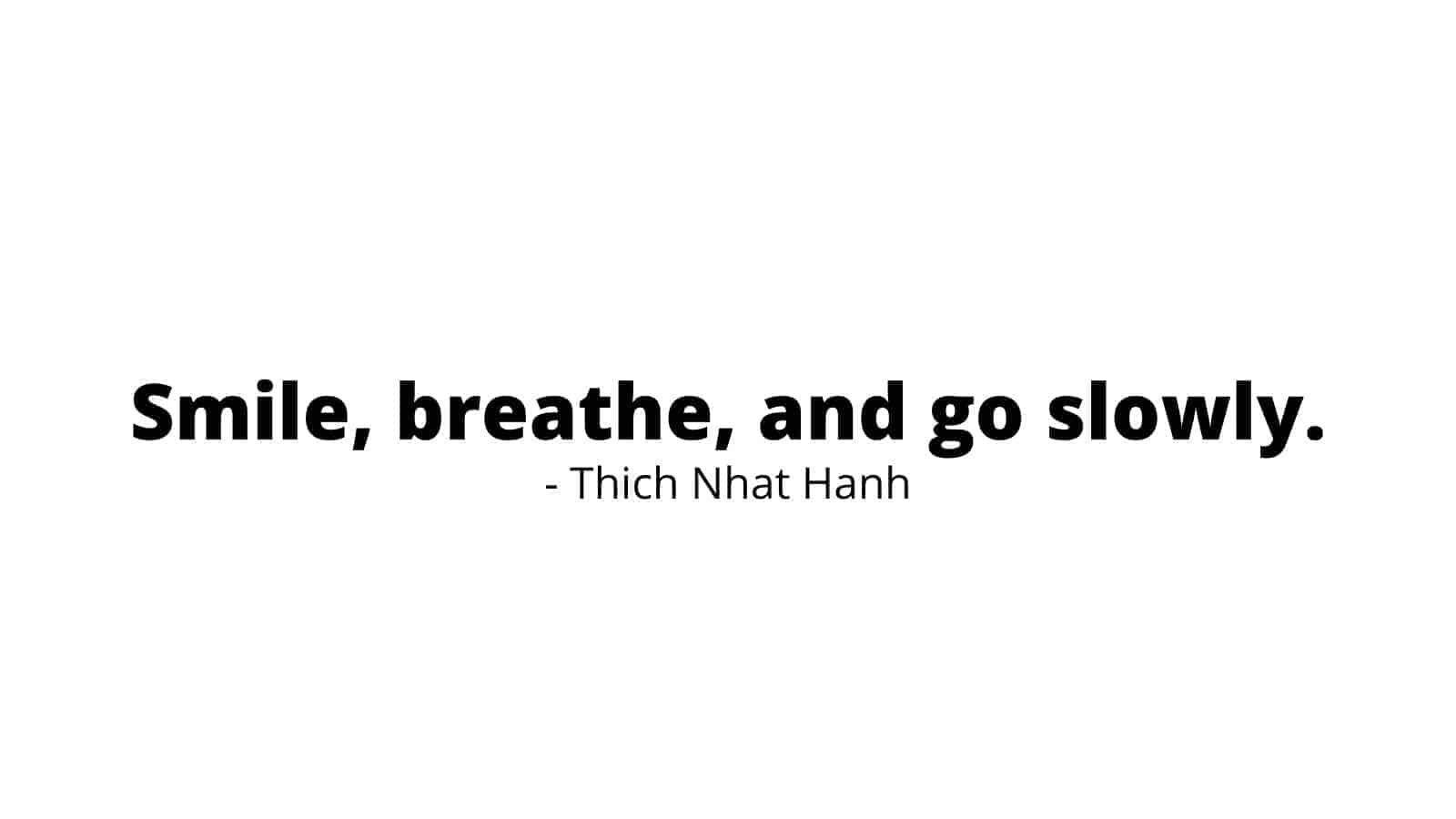The box breathing method is a powerful meditation practice used to return breathing to its normal rhythm. You might also hear this breathing technique called square breathing, equal breathing, or four-square breathing. It involves counts of four, which is where it gets its name.
Box breathing promotes productivity and reduces stress, but it also does much more than that. Breathing can influence your physical, mental, and emotional state, allowing you to use it to improve your overall well-being. Whether you need to de-stress about your personal or professional life, focused breathing can make all the difference.
As you learn why you should try equal breathing, it helps to consider some of the situations. Athletes, Navy SEALs, police officers, and nurses practice this breathing method to help overcome stressful situations on the job. However, you don’t have to be in an overly-stressful role like these to reap the benefits of square breathing.
Eight Reasons to Try Box Breathing When You Meditate
This type of breathing involves rhythmically inhaling and exhaling, naturally calming your mind. You will take slow, controlled breaths that allow you to refocus your mind. While you can meditate without box breathing, it allows for additional benefits and stress reduction.
1. Promotes Relaxation and Helps You Feel Calm
Using box breathing when you meditate will bring a sense of calmness and relaxation. It prepares your mind for meditating as it helps you clear your thoughts and eliminate toxicity. Research shows that this type of intentional breathing calms and regulates the autonomic nervous system.
Square breathing also helps regulate temperature and blood pressure. Regulating these body functions can quickly produce a sense of calm within. You’ll feel more relaxed, allowing you to focus on the essential things in your life.
As you hold your breath for this breathing exercise, it allows carbon dioxide to build up in your blood, stimulating your parasympathetic system. The stimulation produces more feelings of calmness and relaxation in your mind and body.
2. Reduces Stress and Improves Mood
One of the best reasons to try this breathing technique when you meditate is because it helps reduce stress. This breathing technique also helps improve your overall mood. Studies show that this type of breathing can help treat anxiety, panic disorder, depression, and post-traumatic stress disorder.
While small amounts of stress trigger your fight or flight response and stimulate your immune system, you don’t want to experience too much. Increased stress levels can weaken your immune system and cause high blood pressure, fatigue, depression, or heart disease.
This type of breathing can help you focus your thoughts and eliminate negative thoughts that cause stress. Regulating your breathing decreases the levels of cortisol, a stress hormone, in your blood. Not only does it lower cortisol levels, but it also improves your attention span.
As you start thinking productively and positively, you’ll feel better overall. Plus, you’ll know how to eliminate stress and avoid feeling overwhelmed in the future.
3. Reduces Pain and Tension
Square breathing can help with pain management because it reduces muscle tension. It also alters the structure of your brain to better handle pain and alleviates the intensity.
People who suffer from chronic pain can try this method when conventional measures don’t help them. If other methods do help but don’t eliminate the pain, you can try square breathing in addition to the other efforts.
This deep breathing technique uses a different way to reach your brain than other pain treatments do. The differences are what makes the breathing technique effective when other methods don’t work. Some women even use this breathing technique during labor to help cope with the pain.
4. Helps with Concentration
Deep breathing techniques can help improve your focus and concentration. If you have an upcoming presentation or challenging task, spending time meditating and breathing beforehand can help. It increases your mental clarity, energy, and focus.
Not only will it help you concentrate, but it’ll also control your physical and mental response to stress. Doing this will prevent you from getting frazzled and encourage you to slow down and gain insight. You’ll handle your task better, and you’ll also gain self-knowledge as you go along.
Additionally, when you’re doing something that requires your undivided attention, this breathing technique can help you. It’ll help you focus your thoughts on what you’re working on, ignoring any other distractions. Square breathing can also help you manage your impulses so that you can push away anything that threatens to pull you away.
5. Improves Cognitive Performance
Studies show that box breathing improves cognitive performance and reduces negative consequences of stress. You won’t experience as many effects of stress because it clears your mind. As it clears your mind, it allows for peak brain performance and optimal functioning.
People that struggle with attention deficit hyperactivity disorder can use this breathing to manage the condition. The improved cognitive function helps with impulsive behavior.
6. Reduces Anxiety Symptoms
Box breathing helps reduce anxiety symptoms, including those caused by social anxiety, phobias, or generalized anxiety disorder. With approximately 6.8 million adults suffering from stress in the United States, many people can benefit from square breathing. This technique can help you learn to accept all worries instead of letting them disturb your mind.
Making this breathing technique a regular part of your life can prevent anxiety from taking over. You’ll notice that it doesn’t affect you as much anymore, and when it does, you will have an easier time overcoming it.
7. Improves Immune and Cardiovascular Function
Square breathing protects you from the harmful effects of stress on your body by reducing it within. Excessive stress links to high blood pressure and an increased risk of heart disease. It can also cause headaches, pain, and digestive issues, so it is essential to alleviate as much as you can.
When you use this breathing technique to reduce and prevent stress, it alleviates those risks. Plus, the stress response suppresses your immune system, so reducing the issue is essential. By doing the breathing while meditating, you won’t be as susceptible to colds and other illnesses.
8. Helps Treat Insomnia
If you ever have trouble falling asleep, practicing box breathing will make it easier for you. While it doesn’t make you feel tired, it does put your body into a restful state. Once you’ve reached the restful state, you can fall asleep easier without lying awake for hours first.
This breathing technique also helps you calm your nervous system before bed. If yours goes into overdrive when it’s time for sleep, try meditating while doing this square breathing before bed.
Sometimes the pain will keep you awake at night, too. Since this technique alleviates pain, it can help you in multiple ways as you drift off to sleep.
Sleep disorders, including insomnia, are common amongst adults. While many people become accustomed to living with one, a sleep disorder can take a toll on your physical and mental health. Finding ways to overcome insomnia is essential to living up to your full potential.
How to Do Box Breathing
Box breathing is easy, and you can do it anywhere you are, as long as you can find a quiet place. It requires even inhales and exhales, using a ratio of four for timing each breath. Start by exhaling through your mouth for four seconds, and then hold your breath for another four seconds.
Then, inhale through your nose for a count of four seconds before holding your breath again. Make sure you count to four during each step so that your breaths are even and controlled. Do the breathing technique three or four times in a row for the best results.
When you use square breathing while meditating, you’ll experience a clear mind and less stress. You can do it several times each day or practice it when you’re feeling worried or overwhelmed. As you make this technique a habit, try to practice it around the same time each day.
Make sure you sit up straight with your hands on your laps to keep them relaxed. Try to empty your lungs on the exhale and fill them while inhaling. Additionally, try to find a quiet place with no distractions for five to 10 minutes.
As you meditate, close your eyes and focus on your breathing to ensure that you stick to the counts of four. Plus, it helps you get rid of all the stressful thoughts running through your mind.
It might help if you picture a square box as you breathe. Envisioning a box will help you focus on your breathing and help you relax.
Final Thoughts on Proven Reasons to Try Box Breathing When You Meditate
Box breathing is beneficial for many reasons, but how it reduces stress is one of the best. It can help you focus your mind and become healthier while putting your body in a calmer state. Even inhales and exhales will help you concentrate and be more productive.
When you first begin box breathing meditation, you might have a hard time keeping your breath steady. However, as time goes by, it’ll get easy for you. While this breathing technique is helpful in times of stress, continue doing it even when you feel calm already. It’ll help prevent stress from creeping in and help you maintain wellness.





















